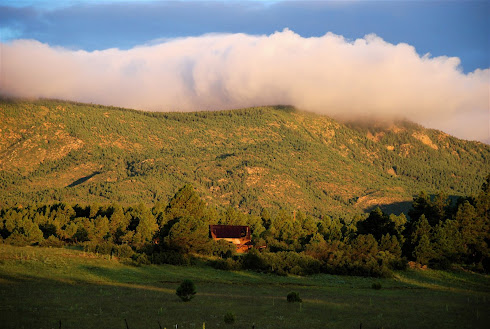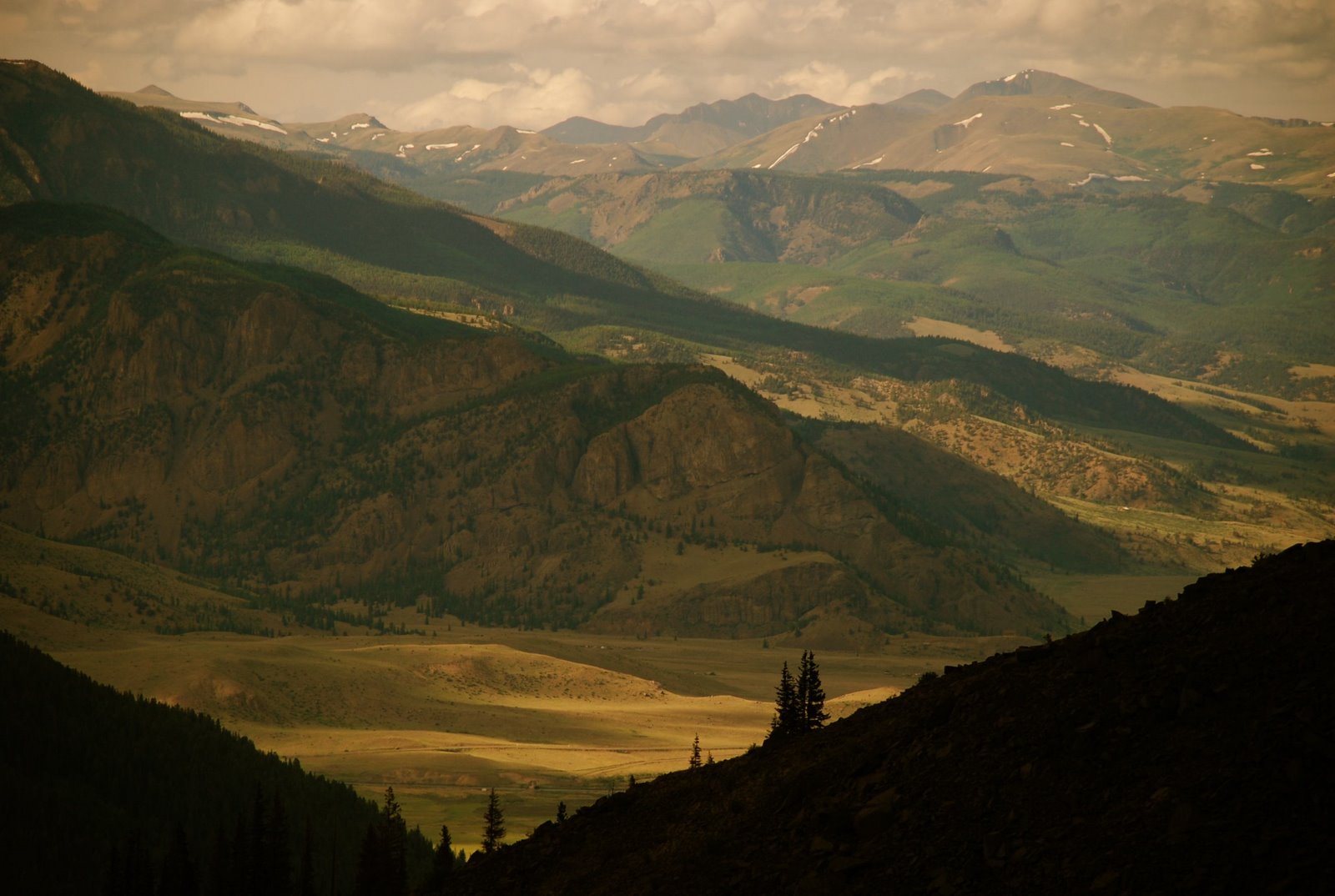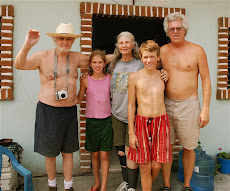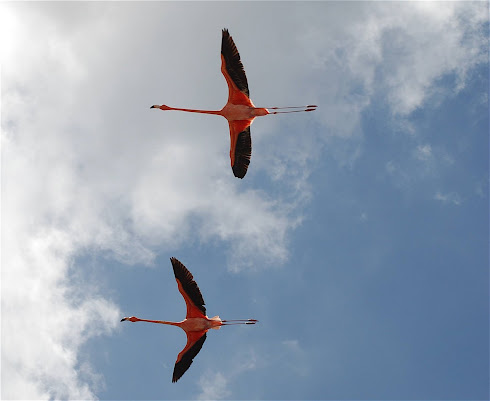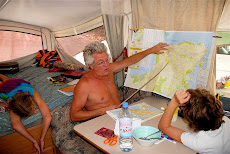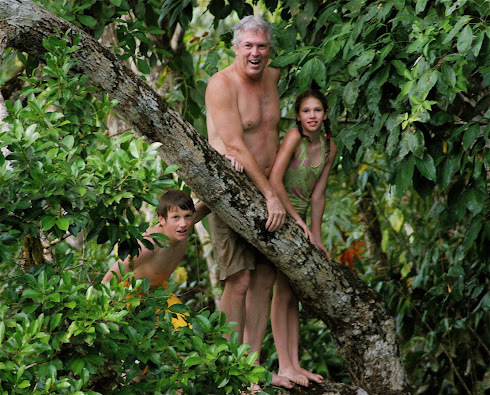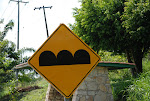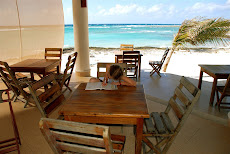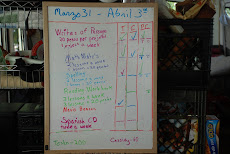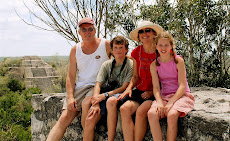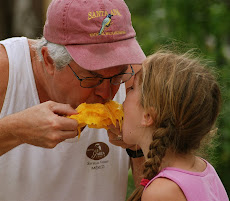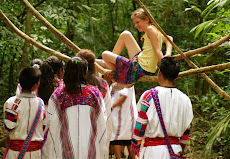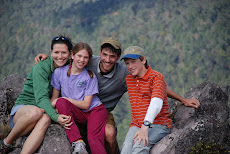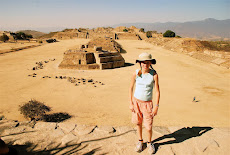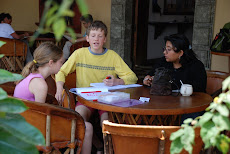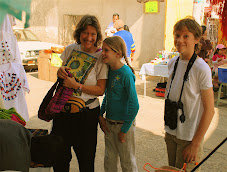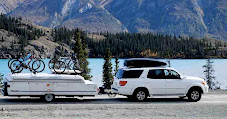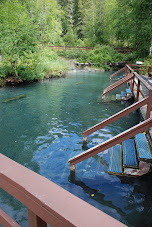
Things have gotten a little slow over the past 3 weeks and the natives are restless here on the beach. We’ve had a few adventures, eaten some fresh fish, done some snorkeling, swam in cenotes, been baked in the sun (from Tucson to Tucamcari….) and we’re preparing to head north. We’ve gone some 3+ weeks with highs in the 85-90 range and the nights around 75 and sticky and we’re ready to look for someplace with cooler nights. Things have been heating up since Bonampak and we’re pretty sure our only relief will be when we pass through the mountains of central Mexico around San Miguel de Allende. We think that we will most likely arrive back in the USA the 3rd week of May somewhere in Texas.
First, a little update on our travels. After leaving Bonampak, we stayed several nights in Palenque to visit the ruins, do some more birding and say aloha to our friends Steve and Susan. We hooked up at the campgrounds in Palenque with 2 young Americans, Nate and Nicole, who were looking for a ride to the coast at Tulum and they joined us for several days of travel. We first stopped outside the ruins of Calakmul and stayed outside a small restaurant on the highway so that we could drive in to the ruins first thing in the morning. The ruins were very isolated and few tourists were there which made for an interesting visit. We decided to drive on towards the coast after the ruins and proceeded on towards Laguna Bacalar just north of Chetumal. Anny talked about our visit there which I most remember for the open air toilets with no roofs where one could heat up in the midday sun while contemplating life on the bowl, birds singing above you in the palm trees overhanging the WC. After several days there swimming and relaxing with some side visits to Chetumal to visit the Maya Culture Museum we continued on to Felipe Carrillo Puerto a few hours north. On the way there, we stopped to see Mahahual on the coast which we had heard good things about. We had heard that this area had been hit by a hurricane the previous August which had damaged the cruiseship dock and that things were slow so we thought it might be quiet there. It definitely turned out to be quiet as we found the area almost totally destroyed with most structures and businesses completely destroyed and electricity only in town. The trees were all either blown down by the wind or poisoned by the salt water surge that came several kilometers inland. We had some ceviche north of town under a tarp where a restaurant had been then continued on north towards FCP. Felipe C.P. turned out to be quite a nice little town with little restaurants and hotels and few foreigners. Cassidy and I birded a great road leading in to the Sian Ka’an Biosphere out of town the next morning while the ladies slept and upon returning, we continued north towards Tulum.
Tulum was another shock as the beach south of the ruins is now wall to wall Hotels and Cabañas all the way to where the Biosphere Reserva starts. It was heavy traffic, wall to wall gringos and we fled north without stopping for more than a bathroom break. Probably 90% of the businesses had come in to being since our last visit so it was almost unrecognizable to us and it was way too busy to think of staying there. We continued north to Paa Mul which is one of the last pockets along this coast which has not been ultra-commercialized.
The Yucatan seems to me what pre-Castro Cuba may have been like with unrestricted investment and building by all comers, foreigners and rich Mexicans alike, little protection of the environment, no sewage treatment plants from Cancun to Chetumal that we could see-an entrepeneur’s dreamland. American business people talked of the benefits of lack of restrictions, poor Mexicans flock here from other parts of Mexico to work in the service industry keeping wages low, local villages and landowners have been swept aside to make room for the mega all-inclusives and unplanned and uncontrolled captitalism has shown how much damage it can do in 20 years. Scuba divers are still able to go far enough offshore and to deep enough waters to find some live coral and some fish but the reefs closest to shore and the surface are now almost completely destroyed. The bays all seem filled with a fine silt which is worked up into the water with any wave action, an oily film often is seen in the top foot or so of water and the beaches between the resort groomed beaches are filled with garbage washing up on shore. The only hope that the Riviera Maya may have is if the Mexican Government realizes that it is allowing a national heritage to be destroyed by its lack of planning, regulation and infrastructure and steps in, but no one expects this to happen. They are dependent on the tourist dollars now and like any addict, have little ability to put off current benefits and pleasure in order to save this land for future generations. The lagoons of Xel-ha and Akumal are now cloudy bathtubs filled with bathers trying to see through the silt and oil as they feed the fish dogfood to keep them coming close enough to see. It probably would not bother me as much if I hadn’t been here in the early 1980’s, swimming in the clear waters, enjoying the reefs which were still quite alive and colorful. Time to move on.
We’ll try to visit some of the inland Mayan villages that still fill the countryside on the way out, maybe see the birds at Rio Lagartos, some ruins, then on to Campeche and beyond. Maybe we’re just a little homesick for something we know better, can understand. We’ll shed a tear for the Yucatan, hope for the best for its people and environment and keep on keeping on.
Con esperanza,
Chris
